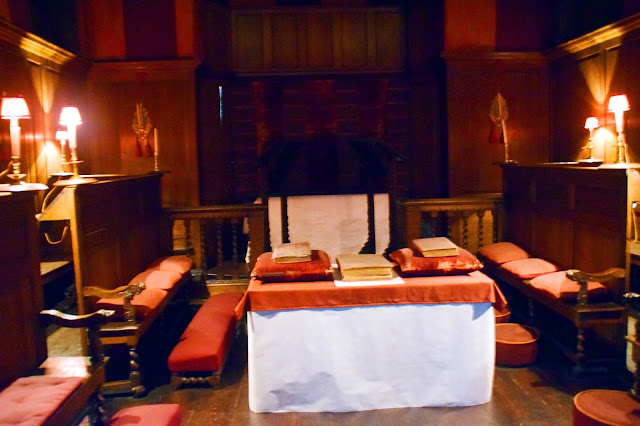Ham House is one of the great Stuart houses situated only 10 miles from central London on the rural banks of the river Thames.
Originally built in 1610, Ham House is the creation of an enterprising
courtier, William Murray, and his tenacious daughter Elizabeth.
As a boy, William was educated with the young Charles I. William was given the lease of Ham House and its
estate as a gift from the King in 1626. William, and later his daughter
Elizabeth, transformed Ham into the house we see today; a rare 17th
century survival of luxury and grandeur.
From 1637-9, William embarked on a series of lavish decorative
alterations to the house. These changes cemented his status as a man
with style, a close friend to the king and an important member of his
court.
In an unfortunate turn of events for William, the English Civil War
broke out under Charles I’s rule in 1642. As a royalist and close friend
to the king, William had no choice but to help fight against the
Parliamentarians, leaving his wife Katherine and their young family to
hold the fort at Ham House.
The royalist cause lost the war and Charles was captured. He would
later be tried for high treason and beheaded in 1649. Charles’ son came
to an agreement with the Scots and was crowned Charles II of Scotland.
However, his attempts to take back the throne of England would fail and
he fled to the continent.


In 1653, Cromwell was installed as 'lord protector' of the new Commonwealth, the next 5 years of his rule would be difficult for royalist families such as the Murrays.
By her cunning, William's eldest daughter Elizabeth was able to steer Ham through Cromwell's rule by establishing good relations with the Protector. All the while she sent secret Royalist messages to the prince in exile in France.


When Charles II was restored to power in 1660, Ham once again became a place for entertaining and extravagance. This time it was under the ownership of Elizabeth Murray, a lady with rich taste.
In 1672, aged 46, Elizabeth married for the second time, this time to the affluent Duke of Lauderdale. He was a key member of King Charles II's inner cabinet. Sharing a love of power and decadence, together they made a dynamic restoration court couple. The Duke and duchess had both travelled widely and employed craftsmen from across the continent and amassed exotic furniture from all over the world. They transformed Ham House into one of the grandest Stuart houses in England.





In 1653, Cromwell was installed as 'lord protector' of the new Commonwealth, the next 5 years of his rule would be difficult for royalist families such as the Murrays.
By her cunning, William's eldest daughter Elizabeth was able to steer Ham through Cromwell's rule by establishing good relations with the Protector. All the while she sent secret Royalist messages to the prince in exile in France.


When Charles II was restored to power in 1660, Ham once again became a place for entertaining and extravagance. This time it was under the ownership of Elizabeth Murray, a lady with rich taste.
In 1672, aged 46, Elizabeth married for the second time, this time to the affluent Duke of Lauderdale. He was a key member of King Charles II's inner cabinet. Sharing a love of power and decadence, together they made a dynamic restoration court couple. The Duke and duchess had both travelled widely and employed craftsmen from across the continent and amassed exotic furniture from all over the world. They transformed Ham House into one of the grandest Stuart houses in England.




























































































No comments:
Post a Comment